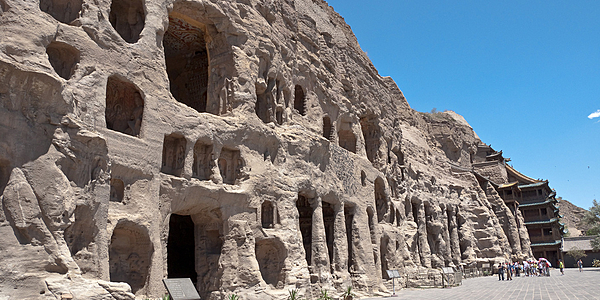


Originally the capital of the northern Wei empire from 398 to 494 AD, it was the kingdom's center of politics, trade, and culture. It retained this status until 523, when the city was abandoned after a series of rebellions.
Today, the population is densely-packed, with three million inhabitants, substantial coal reserves and an influx of tourists. Even though there are some historic monuments in the center of the city, the surrounding area is the main attraction, particularly the Yungang Grottoes. Just sixteen kilometers outside the city, I can promise you that they are well worth a visit.
The Yungang Grottoes are unique. They consist of an area of 18,000 square meters carved out of rock, and are one of the world's most renowned sites of Buddhist rock art. And with good reason: visitors can admire up to 51,000 statues spread throughout 251 caves. That's a substantial legacy - and you are bound to run out of time before seeing everything on your first visit.
Nevertheless, you should go to experience how Datong combined culture and art during the Wei Dynasty. You can really feel it when you enter one of the grottoes. The location encouraged different ideas to mix to create different artistic forms that were derived from religion. A happy union of Buddhist religious art and Chinese cultural traditions as well as a blend of southern and central Asian culture. In addition, the fine detailing, the beauty of the colors and the sheer diversity of the sculptures can't help but have a lasting impression on you!

Work started on the sculptures and carvings of the Yungang Grottoes in 460 AD. It continued until 490, with final details being completed in 520. In other words, it takes time to create a labor of love like that!
But the northern Wei Dynasty wasn't afraid of stepping up to the challenge, safe in the knowledge that, if they managed it, the gods would show them mercy. The monk, Tan Yao, threw himself fervently into the sculpture of the Five Grottoes, closely matching the execution to the design. The legendary thoroughness of the Chinese is evident! Could this monk ever have imagined how his work would become the center of Buddhist art in northern China? Certainly not!
Nevertheless, the result speaks for itself. Twenty-one grottoes are open to visitors. In one of them, number five, there is a giant, seventeen-meter Buddha, the most impressive piece to a novice like me. It's enough to make a walk through the area even more sensational!